Highlights Walking under the river, Greenwich Meridian line, Nelson exhibit and historic pub and caches.Cat supervision is always a good way to start the day. We
can have a coffee while we watch, then pop inside for breakfast. Two cats often
need 2 sets of eyes.
We then drove to the ‘big’ supermarket, only to find it
closed and not opening until 11am. It wasn’t too late for us to turn it into an
orientation drive instead. We went past one girl’s school with annual fees of
about 30 000 pound. Jane said that when school is open at 3ish the street is
full of chauffeur driven cars. The school had a lot of diplomat’s daughters and
that linked to the Embassy we saw yesterday in the Holland Park area. We also
went past the former site of a prep school for Eton/Harrow. John is checking
road rules as we go ready for the 8th when we collect our car.
Jane and Ian had been invited to friends on the other side
of London for the afternoon. They offered to drop us off in town via a drive
through the city (no congestion charges on Sunday) as a different sight-seeing
route.
We drove alongside the Thames for a large part of the route and passed
places such as Somerset House. The Battersby Power Station was prominent on the
other side. Some of the council houses had great positions by the river but
there were also a number of clearly very expensive properties.
We recognised the Houses of Parliament on approach and the
area we had walked 2 days ago before going on to Tower Bridge and the official
City area. We then went to places new to us, the Isle of Dogs, St Katharine Dock
and Canary Wharf area. I got a bit confused here, but it was an area with lots
of flash new apartments.
Jane and Ian dropped us off on the north side of the Thames
near the Greenwich Foot Tunnel. It was designed
by Sir Alexander Binnie, known as Al to his mates, and connects Greenwich
with Island Gardens on the Isle of Dogs. The Greenwich Tunnel was opened in
1902, while the Woolwich Tunnel was opened ten years later in 1912. The
role of the tunnel was to provide easy access to the docks north of the river for
the dockworkers. The Greenwich Foot Tunnel replaced an unreliable ferry
service. The northern end was damaged by bombs in the war and the patch up was
the basis for a cache here. The Greenwich Foot Tunnel is 1,217 feet in length,
and about 50 feet deep and cost £127,000 (about £15 million today), which
included £30,000 compensation to the London watermen (about £3 million), who
had lost their livelihoods. There are lifts at each end (added in 1904) as
well as stairs, although the lifts have proved unreliable in the past we were
told.
The digging of the tunnel was achieved through the use of a tunnelling
shield, however the excavation was done entirely by hand. The tunnelers worked
day and night in eight hour shifts, managing to dig about 10 feet every 24
hours.
We sat by the Cutty Sark and chatted to a
young man with a baby in a pushchair. He was from the Czech Republic and his
wife comes from Cesky Krumlov, which he said was a lovely spot. He thought
Prague was a bit too touristy for his tastes now (ironic given where we were sitting)
and Karlovy Vary he said had had a lot of Russians buying homes in until
recently and now it is mainly Chinese. It will be interesting to see if that is
obvious when we stay next month.
We stopped at the Spanish Galleon for
lunch largely because it was a pub that advertised itself as Britain’s Oldest
Brewer, established 1698. The service and food were fine. We then wandered
towards the Royal Observatory, looking at the sights of Greenwich on the way.
The funfair remained me of being here with Glen and Katherine many years ago as
they wanted to ride on the very small train although they had just been to
Disneyland.
There was a vintage market in operation, but most people were
spread out over the grounds of Greenwich Park enjoying the fine weather. We had
found information for some virtual caches, but stopped at the gate to find a
normal one and then went up the hill slowly, as it was very warm. We have been
here before so remembered the lovely views back towards the city.
Apart from the desire to see the area, we
had the aim of standing on the meridian line for the obligatory photo. We had
read about a cache here and it told us that the line extends past the fence
line and you can visit that part free.
The price for the Observatory area is reasonable it you want to see it
all, but we didn’t as we had explored it fully in the past, so we joined the
small queue for the free part, then wandered around the top, enjoying the
gardens there. We headed for the lawn area and found a spot that actually did
show 000 00.000 (East/West) on the GPS and the phone. On the line itself the
reading is not actually this.
The explanation for this
apparent error is rooted in the history of longitude determination, the
irregular shape of the Earth and a switch from astronomically determined
longitudes to geodetic ones.
We then visited the Maritime Museum, spending
most of the time at the Lord Nelson exhibit. There was a channel at the side of
the path we walked down and children were having a great time paddling in the
water. We also enjoyed seeing a colourful array of figure heads and some lovely
stained glass.
The Lord Nelson exhibit included a portrait
of Nelson at age 21 (he looked so young and boyish) and another painting
representing his death on the Victory. There was a good interactive visual showing
the battle of Trafalgar that the attendant pointed out to us. Nelson’s uniform,
with the hole in the shoulder from the shot that killed him, was also on
display The area concluded with an array of both weird and wonderful
commemorative items that were produced for sale after news of Nelson’s death.
The display pointed out that this showed the degree of public grief at his
passing.
The stained glass exhibit was of the glass
from the Baltic Exchange. This building had been bombed by the IRA in 1992. The
bomb killed 3 and injured 90. I have memories of it although they are vague.
The building was initially going to be restored but the damage was too
extensive and it was eventually razed and replaced by the ‘Gerkin’ building.
However, the stained glass was able to be restored later and is now on display
in this museum.
It is a memorial to the members of the exchange killed in WW1.The memorial forms a hemispherical half-dome about 3 metres
(9.8 ft) high, with 240 panels divided into five sectors, with five
rectangular windows of painted coloured glass, each of which features a
personification of one of the virtues – Truth,
Hope, Justice, Fortitude and Faith. Two panels, one to either side, list
battles in the First World War – Cambrai, Mezières, Arras and Lens, Galipoli, and Messines Ridge to the left; and Bethune, Salonika, Ypres and Loos, Givenchy, Paschendaele to the right. As we have been thinking recently about
visiting many of these areas when in Central Europe, we spent time looking at
it before heading to the café for a coffee/tea.
We also visited the Queen’s House. It was designed
by Inigo Jones who I had heard of before. I enjoyed the wander around the rooms
and up and down the staircases but the importance of the art work was not of
interest to us at this stage of the day.
We had considered a river ride back but
decided it was a bit late and we were a bit tired so we used the Docklands
Light Rail and then tube to get to Shepherd’s Bush. I got a new sim card for my
phone with a couple of top up vouchers for when in Europe. John has done the
same in case he can’t use the credit card, as we have had mixed messages about whether
we could use it.
On our return we let the cats have a wander
and a feed then Jane and Ian arrived home just before we sorted a light tea.

 London, England, United Kingdom
London, England, United Kingdom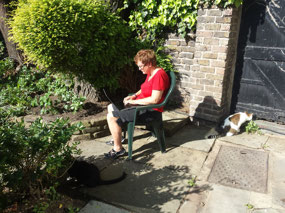
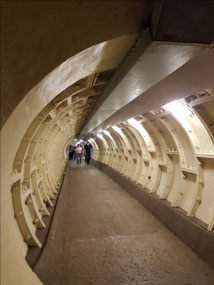
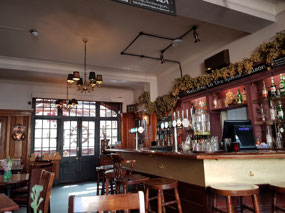
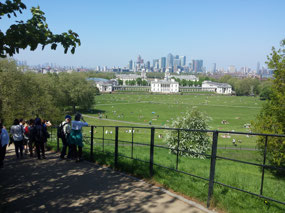
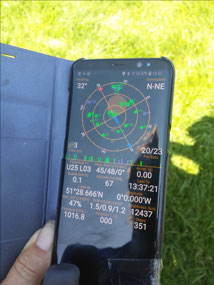
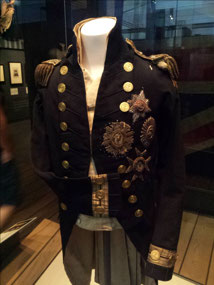



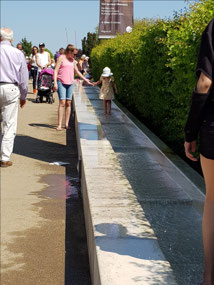
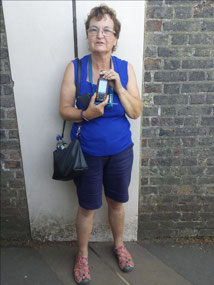
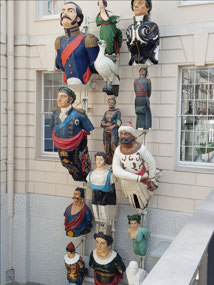

2025-05-22